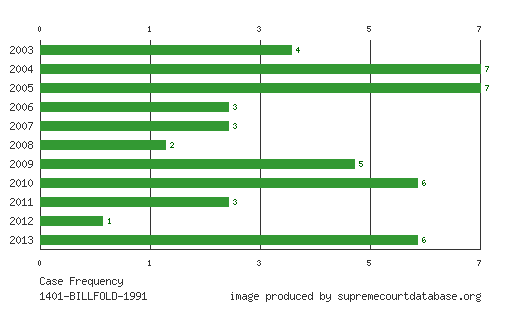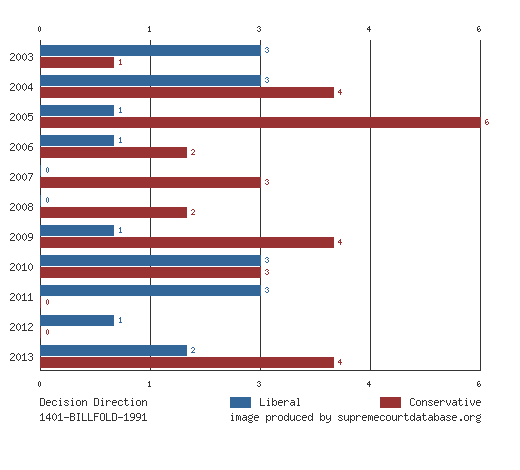The New York Times today has a fascinating article documenting The Roberts Court’s Surprising Move Leftward. Reporters Alicia Parlapiano, Adam Liptak and Jeremy Bowers analyze the court’s decisions from 1946 to the present to conclude that this term could be among the court’s most liberal since 1969.
The court’s leftward movement is modest, and it remains well to the right of where it was in the Warren court years, when the percentage of liberal decisions routinely topped 70 percent. Yet the recent numbers do seem suggestive of a shift.
The Times’ analysis is based on data from The Supreme Court Database, a data collection that contains over 200 pieces of information about each case decided by the court from 1946 to 2013. The types of information include the court whose decision the Supreme Court reviewed, the parties to the suit, the legal provisions considered in the case, and the votes of the justices.
Liberal or Conservative?
A key variable relied on in the Times’ report is whether a decision is ideologically liberal or conservative. Of course, as any court watcher knows, that is not always an easy call. So how does the database decide? It does it based on the issues in a case and how the case is decided.
For example, in cases dealing with criminal procedure, civil rights, First Amendment, due process, privacy and attorneys, decisions would be considered liberal when they come down on the side of a criminal defendant, a civil rights claimant, a person seeking access to government information, or anyone identified as an underdog. Conservative cases would be those that came out the other way.
Similarly, for cases pertaining to unions and economic activity, liberal decisions would be those that ruled in favor of a union, the government, competition, small business, debtors, injured persons, environmental protection and consumers.
For cases pertaining to judicial power, liberal rulings would be those that favor the exercise of judicial power, judicial activism and judicial review of administrative action. For cases involving federalism, liberal outcomes would be those that favor federal and executive power. For tax cases, liberal decisions are those that favor the U.S. government.
The site’s documentation explains this in more detail.
Running an Analysis
You can do your own slicing and dicing of the site’s data, much as the Times’ reporters did. The chart at the top of this post reflects a search I just ran showing the frequency of First Amendment cases from 2003 to 2013. The chart below shows whether those cases came out liberal or conservative.
The search page lets you set a range of search parameters. They include:
- Date range or era.
- Decision type.
- Decision issues.
- Legal provisions involved.
- Vote coalitions by numbers (e.g. numbers of majority or minority votes).
- Winning party.
- Case disposition.
- Declaration of constitutionality.
- Lower court being reviewed.
- Lower court where case originated.
- Parties.
- Justices.
Once you run a search and obtain the analysis, you can further configure the results to change how the information is displayed across rows and columns. You can also generate a list of all the cases included in the analysis and then view the details of any individual case.
Created in 1980s
The database was originally created by Harold J. Spaeth, research professor of law at Michigan State University College of Law and emeritus professor of political science at Michigan State, with funding from the National Science Foundation. After collecting and coding the data, he made the database public in the late 1980s. The data was later made available through this website in order to make it more accessible to a broader range of users.
 Robert Ambrogi Blog
Robert Ambrogi Blog
